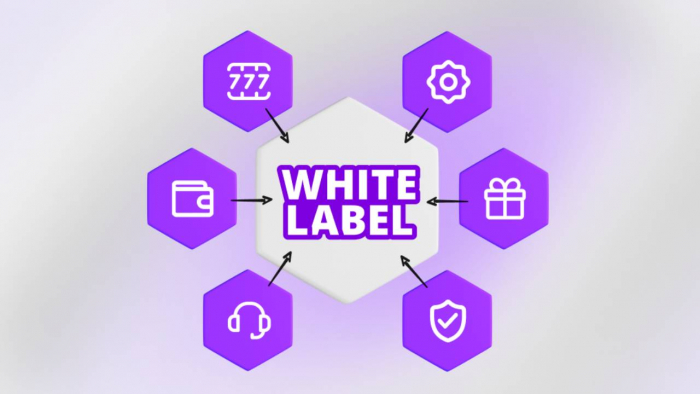If you're running a SaaS business, you know just how competitive the digital landscape can be. Having a fantastic product is crucial, but it’s only half the battle. To make your mark and grow, you need visibility—and that’s where SEO comes in. But here’s the kicker: SEO isn’t just about picking a few random keywords and calling it a day. It’s a strategy that needs to be carefully crafted and continuously fine-tuned to achieve real results.
So, how do you actually use SEO to rank higher and attract more traffic to your SaaS site? Let’s take a look at some of the most effective tactics that will help you scale your search engine visibility and get your content in front of the right audience.
1. Understand Your Audience and Their Search Intent

Before diving into keyword research or optimizing your website, there’s one thing you need to do first: understand your audience. Without knowing what your target customers are looking for, your SEO efforts could easily miss the mark.
Ask yourself this: What problems are your potential customers trying to solve? What questions are they searching for answers to? If you can answer these questions, you’ll be able to create content that speaks directly to their needs.
Start by conducting some audience research—look at their demographics, behaviors, and pain points. Then, use keyword research tools like Google Keyword Planner, Ahrefs, or SEMrush to figure out what terms people are actually typing into search engines. Once you have a clear picture of their search intent, you can tailor your content to answer those questions, helping you drive more qualified traffic.
2. Focus on Long-Tail Keywords for SaaS
When it comes to SEO, broad terms like “SaaS” or “cloud software” might seem appealing, but let’s face it—they’re also incredibly competitive. Instead, it’s much more effective to focus on long-tail keywords.
Long-tail keywords are more specific phrases that are easier to rank for and generally lead to higher conversion rates. For instance, someone searching for “best CRM software for small businesses” is far more likely to convert into a paying customer than someone just searching for “CRM software.”
How do you find these long-tail opportunities? Use tools like Google Keyword Planner or Ahrefs to identify keyword variations that are highly relevant to your business. These keywords often have lower search volume, but they’re more specific, meaning people searching for them are closer to making a purchase decision.
3. On-Page Optimization: The Basics
Now that you know what your audience is searching for and what keywords to target, it’s time to optimize your site to make sure Google understands what your pages are about.
On-page SEO is all about optimizing the elements on your website to make it more search engine-friendly. Here’s a quick checklist of on-page SEO basics:
- Title Tags: These are the clickable headlines in search results. Make sure your title is descriptive, enticing, and contains your main keyword.
- Meta Descriptions: While not a direct ranking factor, a strong meta description can help increase your click-through rate. Write clear, compelling summaries of what the page is about.
- Headers: Use header tags (H1, H2, H3, etc.) to structure your content. This helps both users and search engines easily understand the flow of your page.
- Images: Don’t forget to optimize your images by adding descriptive alt text and compressing file sizes to improve page load speeds.
- URLs: Keep your URLs short, readable, and keyword-rich. A URL like “example.com/saas-software” is far more effective than “example.com/page1.”
These on-page tweaks may seem simple, but they’re essential for improving your rankings.
4. Create High-Quality, Valuable Content
Here’s a secret: content is still king. It doesn’t matter how optimized your website is if the content itself doesn’t offer value. Google rewards sites that create meaningful, helpful content, so if you want to rank higher, you need to start by focusing on quality.
High-quality content is anything that’s helpful, informative, and genuinely useful to your audience. Whether it’s blog posts, tutorials, case studies, or whitepapers, make sure your content solves your audience’s problems and answers their questions.
And it’s not just about writing a one-off post. Content should be continually updated and expanded. If you wrote a killer blog post two years ago, go back and refresh it with the latest stats and information. Google loves fresh content, and so do your readers.
5. Partner with a SaaS SEO Agency for Strategic Expertise
By now, you’re probably feeling ready to dive deep into SEO. But what if you don’t have the time or expertise to handle all the technical details? That’s where a SaaS SEO agency comes in. Partnering with an agency can help you take your SEO strategy to the next level.
A SaaS agency brings specialized knowledge and experience to the table, helping you craft a tailored strategy that aligns with your business goals. They’ll be able to handle the complex aspects of SEO, like keyword research, technical SEO, and backlink building, leaving you more time to focus on running your business.
Whether you’re looking to increase organic traffic, boost conversions, or improve your search engine rankings, a SaaS agency can offer the expertise and resources needed to get the job done effectively.
6. Build a Strong Internal Linking Strategy
Internal links play a huge role in SEO, but they’re often overlooked. These are the links that connect one piece of content on your site to another. By creating a logical internal linking structure, you’re helping Google crawl your site more effectively and guiding users to the most important pages.
Don’t overcomplicate it—link to related blog posts, case studies, or product pages when it makes sense. This not only helps visitors find more of your content but also boosts the authority of your key pages, like your pricing or demo pages.
Be sure to use anchor text (the clickable text in a link) that includes your target keywords, but don’t overdo it. The links should feel natural and relevant to the content.
7. Off-Page SEO: Building Authority Through Backlinks
When it comes to SEO, backlinks are like votes of confidence. When other reputable websites link to your content, Google sees it as an endorsement, boosting your site’s authority and, in turn, your rankings. But how do you get these backlinks?
Start by creating content that others want to link to. This could be a comprehensive guide, an original case study, or unique research that others in your industry will want to reference. You can also reach out to influencers or industry blogs for guest post opportunities, which can help you build backlinks and gain exposure.
It’s not just about quantity, either. One high-quality backlink from a reputable site is often worth more than several low-quality links.
8. Technical SEO: Ensure Your Site Is Search Engine Friendly
Technical SEO is like the behind-the-scenes work that helps Google understand and index your site better. You could have the best content in the world, but if your site isn’t technically sound, it could hurt your rankings.
Here are some things to focus on:
- Page Speed: A slow-loading website can lead to a poor user experience and hurt your rankings. Use tools like Google PageSpeed Insights to check your site’s speed and optimize it.
- Mobile-Friendliness: With mobile-first indexing, Google prioritizes mobile-friendly sites. Make sure your website is optimized for mobile users.
- Schema Markup: This structured data helps Google better understand your content and can improve how your pages appear in search results, including rich snippets.
- URL Structure: Ensure your URLs are clean, easy to read, and descriptive of the page’s content.
If your website is technically optimized, Google will have an easier time crawling and ranking your site.
9. Optimize for Featured Snippets and Rich Results
Featured snippets are the boxed answers you see at the top of Google search results, and they can drive a ton of traffic. To rank for featured snippets, your content needs to answer common questions directly and clearly.
Try to format your content in a way that makes it easy for Google to pull into a snippet—use bullet points, numbered lists, or concise answers. Another tactic is to add schema markup to your pages to help them appear in rich results like product listings or reviews.
10. Monitor and Adjust Your SEO Strategy
SEO isn’t a one-time fix—it’s an ongoing process. To see the best results, you need to monitor your site’s performance and adjust your strategy over time. Google Analytics and Google Search Console are great tools for tracking your rankings, understanding user behavior, and spotting areas for improvement.
SEO is a marathon, not a sprint. Be prepared to make adjustments as you go, whether it’s optimizing existing content, improving your technical SEO, or refining your keyword strategy.
Conclusion
And there you have it—the SEO tactics you need to start ranking higher and driving more traffic to your SaaS site. From understanding your audience’s needs and focusing on long-tail keywords to optimizing your on-page content and building backlinks, there are plenty of strategies to help you rise in search rankings.
If you want to take your SEO strategy even further, consider partnering with a SaaS agency. They can provide the expertise and resources you need to maximize your SEO efforts and see significant growth in your traffic and conversions.
SEO is a long-term commitment, but with the right strategy, it can make a huge difference in how people find and interact with your SaaS business. So, what are you waiting for? Start optimizing, and watch your SaaS traffic soar!
Post Comment
Be the first to post comment!





